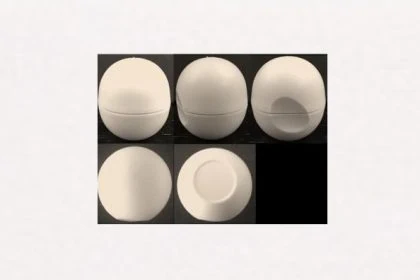According to general case law of the CFI, the initial letter is particularly weighted in the assessment of similarity and likelihood of confusion of word marks, even more so for short word marks. But a look at the case studies shows: the CFI has not always judged according to much cited premise.

According to settled case law of the European Court (CFI) in 2004 (judgment Mundicor, T-183/02 and T-184/02) and 2005 (judgment Flexi AIR, T-112/03), the ruling on similar word marks is subsequently almost always cited: according to it, the initial part of word marks attracts the attention of the consumer more than the following parts. Therefore, especially the initial letters are particularly weighted when comparing the similarity and likelihood of confusion of similar word marks for similar or identical goods and services, even more so when it comes to short word marks, as the CFI emphasizes in its case law.
In the two cases cited, the CFI had ruled that there was a likelihood of confusion in both the Mundicor v. Mundicolor trademark dispute and the Flex v. Flexi AIR trademark dispute – precisely because consumers pay particular attention to the beginning of word marks.
So, there is no likelihood of confusion if the first letter is different?
So, can one simply change the beginning of a well-known brand name and apply for a trademark for similar or even identical goods or services? In practice, this happens again and again, often resulting in a claim of trademark infringement due to likelihood of confusion. A look at the European case law shows: the CFI has not always ruled according to the much quoted premise. The initial letter is not everything, even in very short word marks.
Short word marks – similarity and likelihood of confusion
Case example: PENTEO vs. XENTEO
The CFI ruled in 2012 in the case PENTEO vs. XENTEO (T:2012:251) that the difference in the initial letters of the word marks was not sufficient to neutralize the remaining similarity. The court found a likelihood of confusion between the marks. The identity of the group of five letters with the same pronunciation of the three syllables of the signs led to a certain similarity between these signs.
Case example: ERGO vs. URGO
A year earlier, in 2011, the CFI had also found a likelihood of confusion between the word marks ERGO and URGO (T:2011:392). The consideration that the beginning of a sign is of particular importance in the overall impression it creates cannot apply in all cases, the court explained. It made even clearer reference to its own case law under Mundicor and Flexi AIR: however, that assessment, made specifically for the marks at issue in those judgments, is not an endorsement of a general rule that could be applied in the present case, the CFI ruled. The rhythm and linguistic melody of the marks ERGO and URGO coincided.
The two word marks differ in their initial vowel. However, there is a high degree of visual similarity between the signs in the overall impression they create and also a very similar phonetic similarity, since in English ERGO is pronounced like the letter “e” in the word “ergonomic” and thus very similar to the English pronounced “urgo”.
Case example: Gitana vs. Kitana
The CFI also found similar initial letters in the comparison of the word and figurative marks Gitana and Kitana. “g” and “k” are vocally similar, at least in Germany, the court ruled, explaining that they are so-called “velar occluding consonants.” The two marks are therefore visually very similar, and there is a likelihood of confusion, the CFI ruled (T:2013:462, 2013). The fact that the letter “g” was made larger in the word and figurative marks, but this did not neutralize the otherwise identical visual and phonetic similarity of the marks, according to the CFI.
Very short word marks
But what is the case law for very short word marks? There are EU judgments and good case examples on this issue as well.
Case example: BASS vs.PASH
The case BASS vs. PASH from 2003 (T:2003:264) was not decided by the initial letter, because this was even seen as quite similar, since at least in Germany in some regions the consonants “b” and “p” are pronounced very similarly, as the CFI stated.
However, due to the well-known word “cash”, it is also very common and customary in Germany to pronounce PASH not like “PASS” but like “Päsch or Pasch” (as if it were a rhyme on cash), the court added, and therefore ruled that there was no likelihood of confusion.
Case example: ODA vs. RODA
In the comparison of such short word marks as ODA and RODA, the difference of 3 to 4 letters in the total length of the word marks was only of minor importance, the CFI ruled (T:2006:335, 2006). The similarity of the signs must always be assessed according to the overall impression created, in particular, by the complete pronunciation of a word mark, the court emphasized. In the present case, it also had to be taken into account that the difference in the pronunciation of the two word marks was not very audible, at least in English, because the vowel “o” has the property of largely absorbing the pronunciation of the letter “r” preceding it. Therefore, the CFI confirmed the likelihood of confusion between the short word marks.
Short word marks – similarity, but no likelihood of confusion
Case example: LITU vs. PITU
The CFI ruled differently in 2017 in the comparison of the word marks LITU and PITU (T:2017:30). The letters placed at the beginning of each of the signs, namely the letter “P” and the letter “L”, were clearly different letters. Therefore, there was no likelihood of confusion between the short word marks, the CFI ruled, despite some phonetic similarity.
The case was different for the word marks PITU and RITU, the court added, as the letters “P” and “R” were visually similar. In fact, the case of PITU vs. RITU had been judged to be similar by the trademark office in the UK.
Case Example: Welly vs. Kelly’s
And in the Welly vs. Kelly’s case, the court also ruled in 2018 that there was no likelihood of confusion between the two marks, despite the identical rhythm and an identical intonation of the spoken marks (T:2018:861). Welly and Kelly’s are both word and figurative marks, with both the design and word elements being examined for similarity. While the CFI did not consider the figurative design of either of the marks in dispute to be distinctive, it nevertheless took into account the different spelling of the initial letters of the marks in comparing the word elements Welly and Kelly’s, resulting in different shapes and contours.
The CFI also referred directly to its LITU vs. PITU judgment and emphasized that even an otherwise existing similarity of signs cannot compensate for the difference between these signs resulting from their different initial letters. This is particularly the case when those letters are visually very different – as in the present case – and the signs in question are short.
Conclusion
The examples show that it is by no means settled case law that a different initial letter in a comparison of word marks – all the more so in relation to short word marks – is sufficient as an argument against likelihood of confusion. This should be considered when applying for a word mark (or a word and figurative mark) as well as when defending or suing against a trademark infringement due to likelihood of confusion.
We will be happy to assist you in this regard. Our attorneys have many years of expertise in trademark law as well as in the entire field of intellectual property and are authorized to represent you before any court – in Germany as well as internationally.
Please do not hesitate to contact us!
Sources:
Relevant judgments are mentioned directly in the text
Image:








Leave a Reply